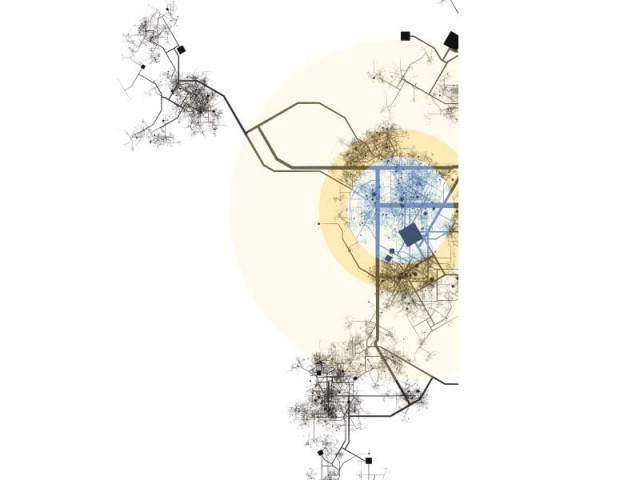Planned urbanisation: Can rowdy cities like Karachi be tamed?
UN-Habitat chief believes there is a science to urbanisation.

What makes our cities and what drives them? Should they be meticulously planned or should there be room for amorphous growth? Is there a science behind urbanisation?
Joan Clos, executive director of the United Nations Settlements Programme, UN-Habitat, believes there is.
According to Clos, the stages of a city’s growth are marked by ‘drivers of urbanisation’ – land prices, infrastructure and public spaces. Control them, and you can plan your cities.
In a way then, cities are perhaps like children. You have to catch them when they’re young before they get out of control. And if one would use this analogy, Karachi, today, would be a rowdy teenager.
Growth stages
Speaking via video conference to a group of 31 urbanists, CEOs and academics on the first day of the Urban Land Institute and Citistates Bellagio Summit 2012, Clos said the first driver of urbanisation is land prices.
“We see that the form that the city takes is when per capita GDP is between $0 and $2,000,” he said, referring to the first phase. Urbanisation takes place where land is more affordable while expensive land remains dormant for speculation in the future.
The second driver is infrastructure – when cars, roads and motorways become more important. This phase begins to emerge when per capita income is roughly between $700 and $900.
“When you see infrastructure-driven growth, you see a form of urbanisation that generates a huge demand for mobility,” Clos said. This could be where a city like Karachi is located today. Pakistan’s per capita income is about $1,200.
Later, when a society becomes more complex, the third phase of urbanisation takes place in which the city plans for public space.
How cities actually grow
However, that is not how cities usually grow.
“When [cities] reach income levels of about $2,500 per capita, they need to then spend a huge amount of money to redesign the city because finally there is discovery of the fact that pathological organisation doesn’t provide the results of proper urbanisation.”
The city grows where land is cheap and this is not necessarily the best way to organise it.
“Whenever you have proper urban planning, we know that the percentage of land we allocate to green areas and parks is about 45% to 50%,” he said. Sadly, today cities usually have just 10% of land set aside for parks and 30% for roads.
Conflict of interest
Governments thus need to be very clear on the legal limitation of what is buildable in a city, and what comprises common space.
Proper urbanisation requires a high level of governance, ie, capacity to address conflict of interest. In urbanisation, you work with a lot of local interests, which are mostly contradictory.
Governments need a simple 20-page national urban policy on a set of basic principles; where are our people living today, how many cities and types do we have and what is the plan to drive urbanisation in the next 20 to 25 years, Clos said.
“Don’t do zoning, don’t do master planning. The important thing is to delineate common space and buildable space. The rest you will do later.”
Counter arguments
Other participants at the forum argued that in the initial phase, cities tend to grow in the right place and good locations but subsequently the price of land tends to make it grow in the wrong place.
Enrique Penalosa, former mayor of Bogota, argued that all land should be state-owned so that land value does not distort urbanisation. His argument was buttressed by the example of the Singapore. The CEO of its Housing Development Board, Dr Koon Hean Cheong, pointed out that they were able to tackle their public housing problems because Singapore controls all the land.
South African expert Christine Platt said there is a stage that comes before planning that needs to be factored in. When people come from rural areas, they can’t necessarily afford planned areas, and therefore settle on the peripheries of planned towns.
Published in The Express Tribune, August 20th, 2012.



















COMMENTS
Comments are moderated and generally will be posted if they are on-topic and not abusive.
For more information, please see our Comments FAQ